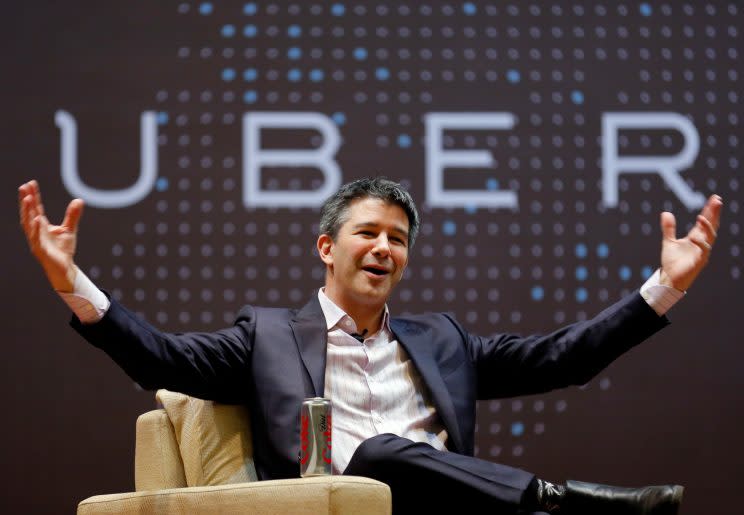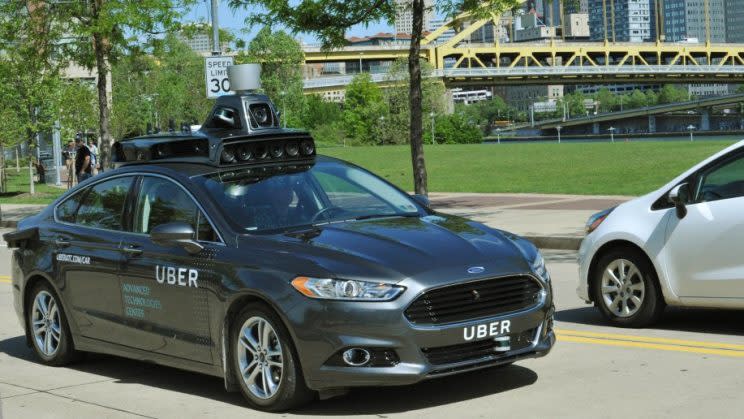Uber’s next CEO faces 3 big challenges

Uber CEO Travis Kalanick is out. After a series of public relations disasters resulting from claims of sexual harassment, sexism, privacy invasions and law enforcement evasions, the co-founder announced his resignation under pressure from investors.
But a changing of the guard won’t necessarily right Uber’s listing ship. The new face for the company will undoubtedly encounter a slew of challenges right off the bat. But the most important matter is whether the person can continue to grow the business while completely changing its corporate culture.
Profit and culture
“It’s really important that they get someone in there that not only has a good business mind, but also has a good culture,” said Gartner research director Michael Ramsey. “That will be vital for them going forward.”
Kalanick, however, won’t be easy to replace. As Ramsey points out, a company’s founder helped bring the business to life, and as a result, thinks differently about an organization than an outsider does.
Still, as much as Kalanick’s leadership helped build the company to what it is today, it also damaged its standing enough to force investors to push for his resignation.
The change is all the more important as Uber moves closer and closer to its goal of going public. And while a $69 billion valuation is impressive, the company is still losing money. If Uber does want to become a publicly traded firm, its next CEO will have to provide some kind of blueprint for how the company will reach profitability.
“You can’t just manufacture losses without some plan for showing how those losses will disappear at some point,” Ramsey said. “I think that the management change and sort of a quiet period will help with that.”
Improving driver and rider relations
Outside of Uber’s cultural and growth issues, the company needs to drastically improve relations with both drivers and riders.
“They [Uber] have to do things to restore people’s trust, mostly their drivers’ first and then, second, they have to perhaps take on some things to improve their image with riders,” Ramsey explained.
It’s true. According to USA Today, Uber’s share of the on-demand cab industry fell from 90% to 74% in the past two years.
The data, which TXN Solutions compiled for USA Today using credit card receipts, also shows Uber saw a 3% decrease in rides following the explosive allegations of company-wide sexual harassment made former engineer by Susan Fowler.

(Photo by Mike Coppola/Getty Images for Lyft)
During the same period, Uber’s competitor Lyft saw its chunk of the ride-sharing industry increase by 3.5%.
“If there are drivers available, and the cost is relatively similar it’s very easy to use a different service,” Ramsey said. “You just need to have the space on your phone for two apps.”
Ramsey suggests working to ensure that drivers are paid fairly, which could be important since Uber has been accused of shortchanging drivers.
The company has already begun working to do improve driver compensation by allowing riders in select cities to begin tipping their drivers, rather than simply giving them star ratings based on their performance.
Lyft, on the other hand, has given riders the option to tip their drivers for some time already. And while many Uber drivers also work with Lyft, Ramsey says there is a larger percentage of Lyft drivers who don’t work for Uber. The reason, he suggests, is Lyft’s tipping policy.
If Uber wants to keep drivers on the road who aren’t also moonlighting for its direct rival, the new CEO will need to address their concerns and likely expand tipping nationwide.
Pushing innovation. Or not.
Despite its cultural and driver-related issues, Uber has continued to make headlines for its continued push into self-driving vehicles. Sure, some of those headlines may not have painted the company is such a good light — putting cars on the road without the proper permits then having one run a red light will do that — but the promise that Uber could have vehicles on the road nearly 24 hours at a time could be huge.
However, Recode reports that internal issues between factions in the company’s self-driving division could hamper its ability to move forward with the technology.

What’s more, without Kalanick behind the wheel, Uber’s new CEO may put less of an emphasis on the company developing its own self-driving vehicles and could instead seek to make a deal with a company already in the space as Lyft did with Google’s (GOOG, GOOGL) Waymo.
“Those are the kinds of things that are really important to someone who is a founder who has a vision,” Ramsey said, “but may not be as important to a new CEO who is looking to right the ship and get their finances straight.”
More from Dan:
Nintendo’s ‘Arms’ is a whimsical fighter with wonderful multiplayer
Microsoft exec defends introducing laptop despite declining PC market
Microsoft’s new Surface Pro is a powerful machine with a slight drawback
Microsoft’s new Xbox One X is a beast, but faces an uphill battle
Email Daniel at [email protected]; follow him on Twitter at @DanielHowley.
